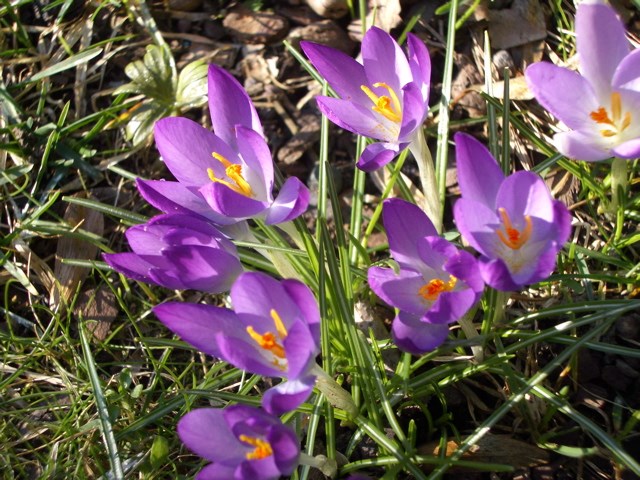During September, there’s joy and hope to be found among the stacks of spring bulbs, all with gorgeous pictures of their beauty during that first year of bloom. They almost always fulfil those pictures in their first year.
But whether those hopeful bulbs give you blooms in subsequent years depends on where they were planted, how they are treated — and whether the local wildlife fancy them for lunch.
Most at risk for flunking out on second-year blooms are tulips — that’s why many gardeners treat them as annuals. It’s easy to forget that well-drained soil and sun is essential for tulips. Also they need to be very dry through summer.
In many gardens, squirrels and voles love to eat tulip bulbs. In rural gardens, people must protect tulip flowers and leaves from deer.
Often containers are by far the most successful place to grow tulips. Gardeners can mix their own free-draining soil and move their pots into sunny areas, then cease watering them in summer.
Crocuses need the same conditions as tulips but deal with problems differently: in semi shade, crocuses slowly stop flowering but their corms keep right on producing leaves and often increase. Crocus corms are also favourite squirrel/vole munchies. Flat pieces of wire laid above bulb plantings stops squirrels digging but voles sometimes run along mole tunnels.
But you’re home free from both if you plant the tiny, very early Crocus tomasinianus. Flower colour ranges from deep purple, to mid-purple to lavender. Squirrels hate it. It increases fast. This is often the crocus that can be seen turning a lawn (and probably the rest of the garden too) into a pale mauve to purple tapestry.
Varieties include Barr’s Purple, Ruby Giant, Whitwell Purple and Roseus.
Daffodils like sun in the flowering season, but later prefer the shade of deciduous trees and shrubs especially on slopes or in raised beds. Clay soil gardeners can find daffodils tend to rot if soil stays moist all year. The basic daffodil trumpet forms tolerate more adversity than daffodils bred to have exotic forms and colours.
Some of the most beautiful blues among flowers can be found in the smaller spring bulbs. One of the loveliest is Scilla siberica. It’s prairie-hardy, very dwarf, shade-tolerant, undemanding and inexpensive. Also it spreads fast and is pest-resistant.
This scilla naturalises well around deciduous trees in thin, sparse or close-cut lawns. In thick, long-cut lawns it’s overly shaded and the flowers are harder to see. Under shrubs in flower borders, it’s magnificent.
Chionodoxa likes similar conditions and is equally easy. The basic form is blue with a white eye, but there are pink and all-white ones. It’s another quick, easy to get and inexpensive spreader. Not quite so easy to get is the gorgeous little Chionodoxa sardinensis.
Anne Marrison is happy to answer gardening questions. Send them to [email protected].
This is an intense true blue with a tiny white eye. Chionodoxa sardinensis produces a glorious mist of blue flowers, followed by large, round marble-size seedheads which dry out and disperse – then the plants vanish totally until next spring.
Anemone blanda flowers in spring but flowers tend to open only when the sun is out. It has good tolerance for summer drought. This anemone spreads easily but most seedlings are blue. White, lavender and pink versions are easily available in garden centres.
Anne Marrison is happy to answer gardening questions. Send them to her via [email protected]



